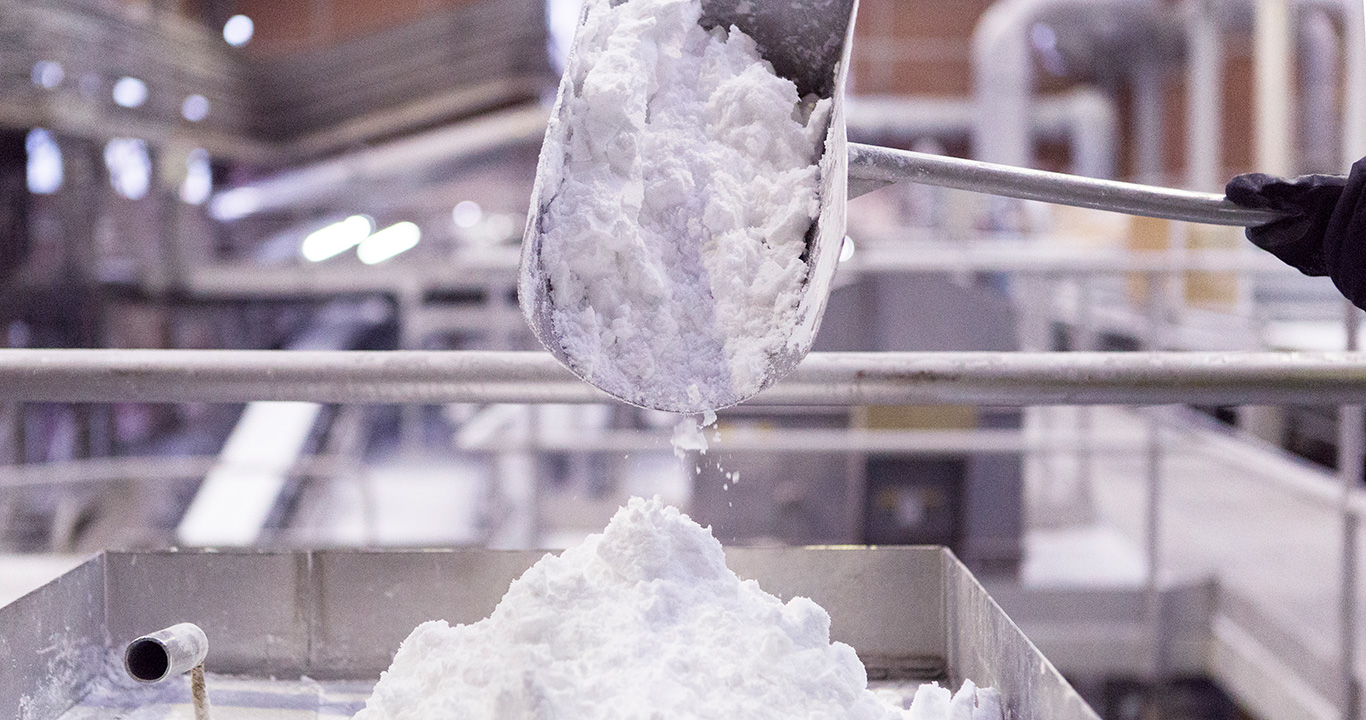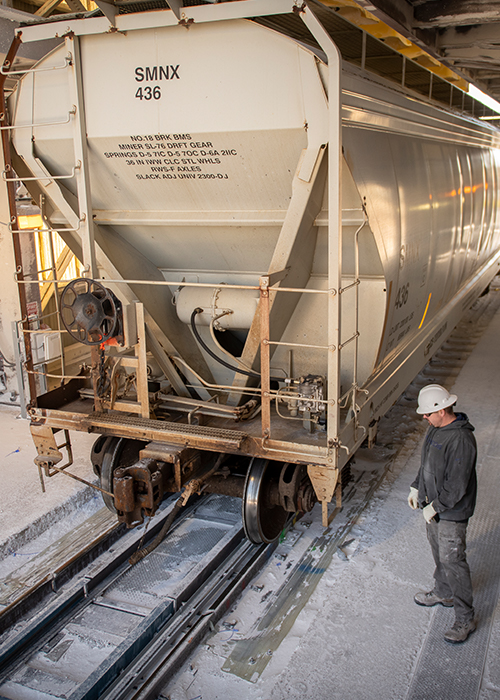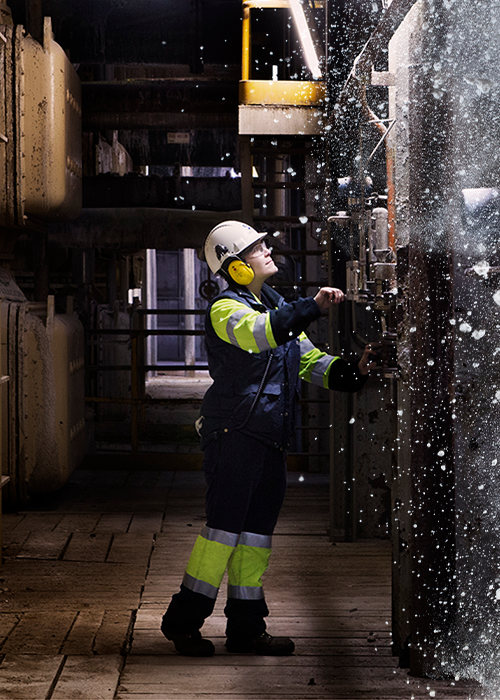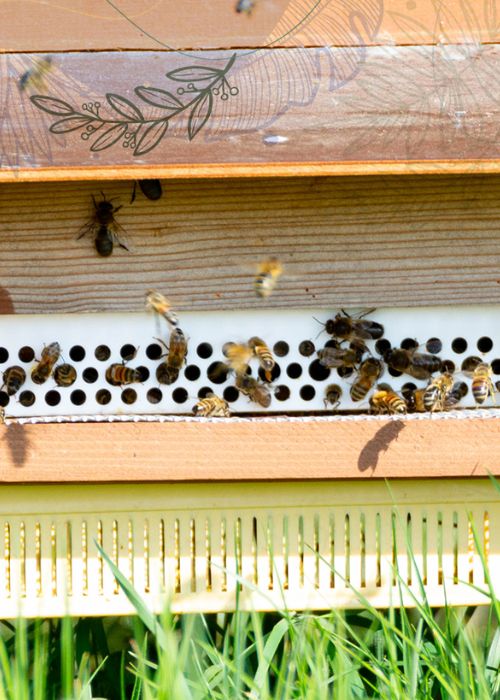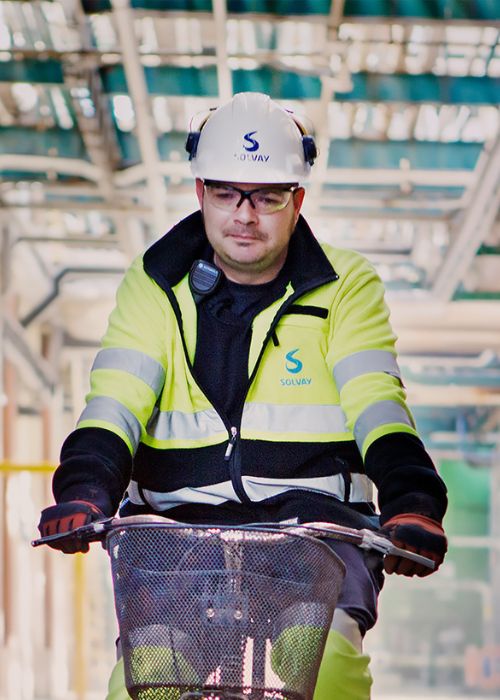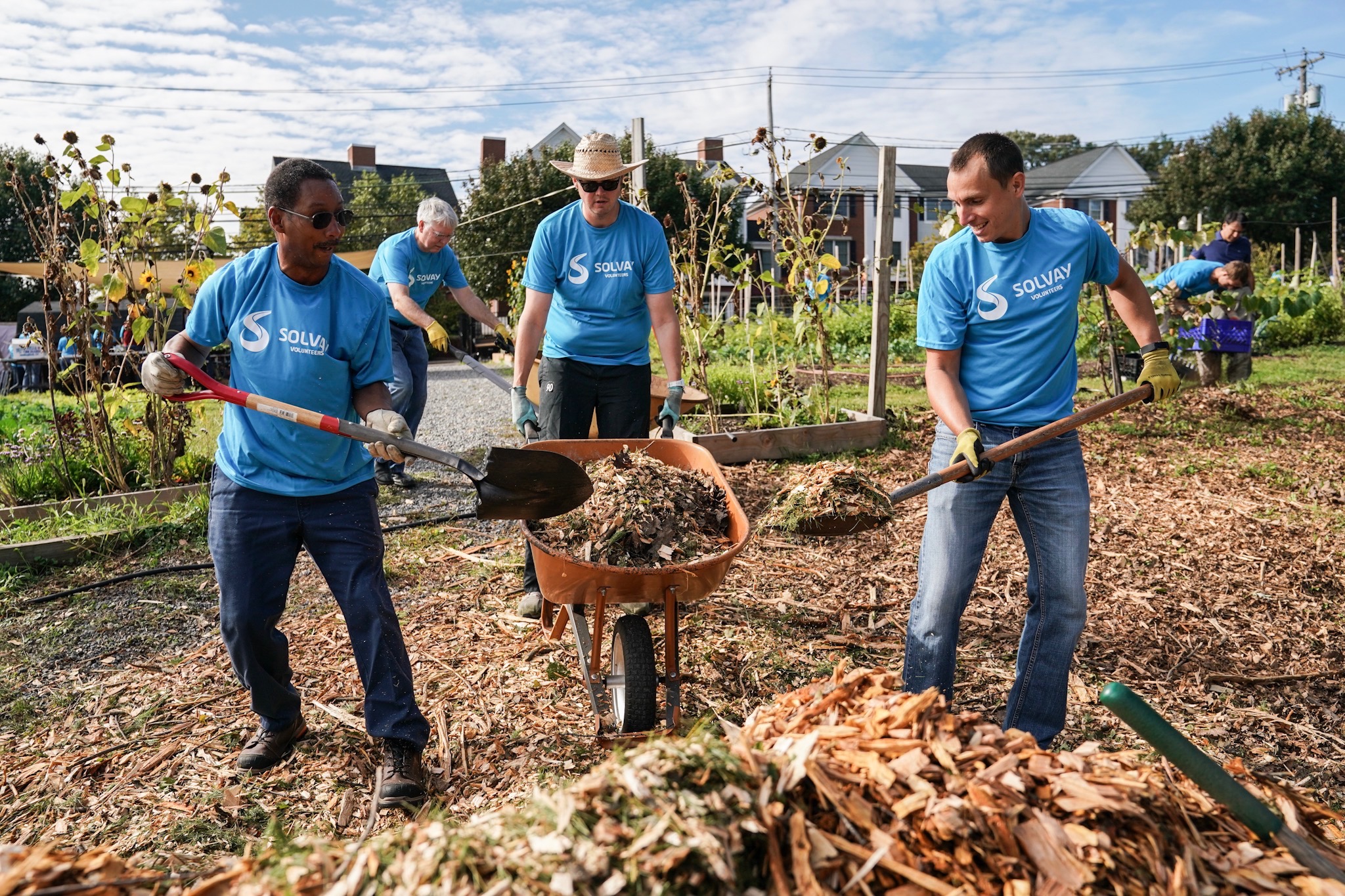Innovation is Ernest Solvay’s legacy
In 1863, Ernest Solvay invented a radically new industrial process for the production of soda ash. His technological breakthrough, known as the Solvay process or ammonia-soda process, provided a more efficient and cleaner alternative to the Leblanc process it replaced. By 1900, Solvay’s innovation was so successful that it was used to produce 95% of the soda ash consumed worldwide.
Soda ash is a vital component in glass manufacturing. It reduces the melting temperature of sand, the primary ingredient used in glass formulation, significantly cutting down energy use and related CO2 emissions. As a result, glass manufacturing today accounts for more than 50% of the world’s total soda ash production.
Over his lifetime, Solvay continued working to improve the process and gain an edge over his competition. Our Solvay group continues building on this legacy today, and we are, in fact, seeking to dethrone our founder’s original soda ash process with a breakthrough that will make the company the best-in-class in terms of sustainability, helping us reach our climate neutrality target and satisfy increasing market demand.
Investing in CO2 reduction
Over the past 30 years, Solvay has invested €40 million to develop proprietary technology, patented in 2014, to improve upon the same attributes as our founder did 160 years ago — sustainability and competitiveness. This investment, and the work of our talented engineers, researchers, technicians and operators, has enabled the company to develop the e.Solvay process, a new technology for producing soda ash with revolutionary improvements: 50% fewer CO2 emissions; a 20% reduction in energy, water and salt consumption; and a 30% reduction in limestone consumption along with significantly less limestone residues.
Discover the e.Solvay process
“I am proud that Solvay is perpetuating our founder’s legacy of innovation, as we lead our industry toward a more sustainable future,” explains Solvay CEO, Philippe Kehren.
The new technology complements our energy transition plans, using an electrochemical process that would be powered by renewable energy instead of fossil fuels. The new process will be more efficient, reducing the consumption of natural resources and energy.
Producing soda ash starts with salt and calcium carbonate, but simply combining NaCl with CaCO3 together to produce soda ash doesn’t work and it requires additional chemical steps. Ernest Solvay’s original innovation employed a loop in which ammonia is used as another raw material to act as a catalyst and convert the salt and calcium carbonate into soda ash, or sodium carbonate.
In Ernest Solvay’s loop, instead of consuming ammonia, the process regenerates it, cutting costs through recycling and eliminating the need to buy fresh ammonia. This ammonia loop requires the use of a lime kiln fuelled by fossil raw materials to calcine the limestone.
While this ammonia loop was a great success in its time, the new e.Solvay process is considered more energy efficient and more sustainable. With our Group’s new innovation, the lime kiln function will be substituted with a less energy-intensive electrochemical process based on decarbonized energy and the ammonia will be recovered without CO2 emissions. However, these are not the only benefits this new technology brings.
In addition to reducing CO2 emissions, the new process also improves yield by producing the same amount of soda ash but using fewer resources — less salt, limestone, and energy. Besides these environmental benefits, the e.Solvay process also translates into significant cost savings thanks to the consumption of fewer resources, less energy, and fewer CO2 emissions, particularly in Europe, where facilities must pay for their CO2 emissions.
A game-changer for Solvay’s carbon neutrality strategy
Solvay’s energy transition plans will enable the phasing out of coal and will also reduce emissions by 30% by 2030. Our soda ash team expects that this new innovation, currently being tested at its facility in Dombasle, France, would allow the company’s soda ash business to reach full carbon neutrality by 2050.
While our Group’s existing plants each typically produce 500,000 tons of soda ash per year, the smaller-scale Dombasle pilot plant would be able to produce around 500 tons per year — or 1/1000 of a typical soda ash plant operation. Pilot began in April and yielded positive results as of June, showcasing the stability of the process through its operation. The pilot is expected to run for two years before production can be progressively ramped up to an industrial scale. Indeed, we estimate that we need two years to fine-tune the parameters and work with partners to design the necessary industrial-scale equipment that does not exist today.
“What we need is so big, but because it’s never been produced before in terms of equipment, we have embarked our suppliers and partners and they are now on board and excited to support this innovation,” explains Jean Charles Djelalian, Head of Sustainability at Solvay.
Once the new process is proven and fully operational, we intend to progressively roll out the new technology across all European soda ash plants until 2050. The new technology will enable our plants to operate more efficiently and ensure our customers have access to a secure supply of soda ash to meet growing demand worldwide. The new e.Solvay process reduces the consumption of natural resources, strengthening our competitive advantage and furthering our efforts to reach our sustainability goals.
